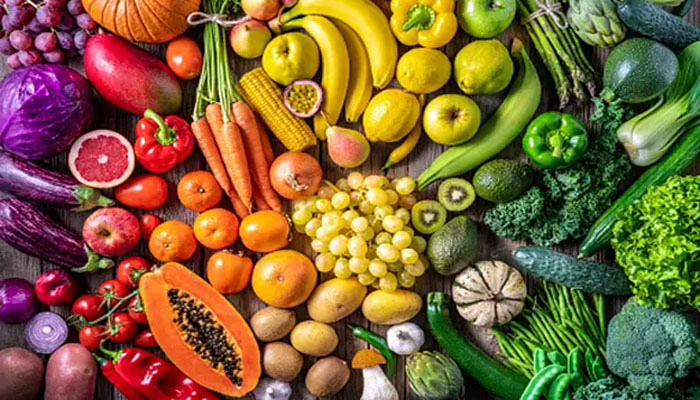Magic of Rainbow palette: Can colours amp up nutritional goodness?
Read to find out how colours could improve your health by adding ‘nutritional content’ to your plate
January 08, 2024

Colourful food is visually appealing and might come with a higher price tag, but what about its impact on the health? Let’s find out.
While there is no proof that the colours themselves add extra nutrients, the natural compounds called phytochemicals, responsible for the vibrant colours, could offer health benefits.
Dietitian Annemarie Aburrow suggests that these phytochemicals, working as antioxidants, may help reduce the risk of heart disease.
Even if the colours don't directly contribute additional nutrients, many people find joy in eating colorful food because of its visual appeal.
Red
The color red, found in tomatoes, strawberries, raspberries, and pomegranate, and more, comes from Lycopene, which is said to have “antioxidant properties” that help against heart diseases.
Lycopene, when cooked properly, gets easily absorbed in your body. While there is no evidence of this theory, it would be pertinent to note that a little red on your plate will not be harmful.
Orange
The colour Orange is high in carotenoids, such as alpha-carotene and beta-carotene, which converts vitamin A in the body.
Vitamin A, important for hormone production and eye health, can be found in Carrots, butternut squash, pumpkin and sweet potatoes.
It has been previously claimed that vitamins A, C, and E help in preventing heart attacks but it is of crucial importance to note that large trials haven’t confirmed this theory.
While individual vitamin supplements should not be taken unless recommended by a doctor, eating beta-carotene rich foods in safe.
Yellow
Yellow colour has carotenoids such as beta-carotene, responsible for the colour, and beta-cryptoxanthin, mostly found in sweetcorn, peach, papaya, and egg yolk.
Both, beta-carotene and beta-cryptoxanthin, get converted into vitamin A when consumed by our body. It has been found via studies that it helps in reducing the risk of arthritis and cancers.
Green
Chlorophyll is responsible for green colour in fruits and vegetable, however; other nutrients found in green vegetables such as broccoli, cabbage, Brussels sprouts, kale, and pak choi, also includes sulforaphane and glucosinolate.
Research suggests that sulforaphane helps in protection against blood-vessel damage and cancer, but it needs more work to prove.
Ongoing studies explore sulforaphane's potential against heart attack, stroke, and gestational diabetes.
All the vegetable mentioned above, including peas, sweetcorn, yellow peppers, and eggs, are rich in lutecin and zeaxathin, which prevent age-related macular degeneration.
Blue and Purple
The element responsible for giving food their blue and purple colour is anthocyanins, powerful antioxidants.
According to some lab studies, they have an important role in protecting cells from getting damaged. However, human studies are inconclusive.
Purple beetroot is rich in nitrate and might help in reducing blood pressure but again, more research is needed in this regard.
Some other nitrate rich food includes, purple lettuce, carrots, green beans, spinach, cabbage, and radishes.
White and Beige
While colour in fruits and vegetable is a gift from Anthoxanthins, which reduce cardiovascular diseases and inflammation risk but more research is required.
Potato, a beige-coloured vegetable, are rich in vitamin C and potassium. While they do not have a reputation of being “healthy” vegetable, their skins are rick in fiber, essential for a balanced diet.
To make potatoes healthier, avoid adding fat to them while cooking.
Some other potassium sources include bananas, parsnips, and mushrooms. They are beneficial for heart and muscle’s function.











